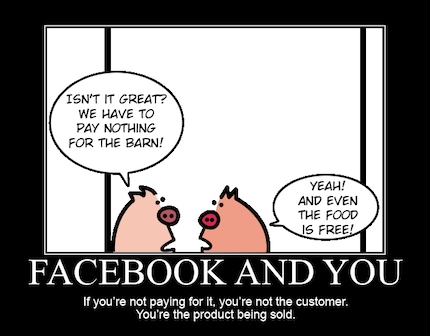
Background information
Microsoft 365 introduces AI features and price increase
by Martin Jud

Microsoft Teams is a great piece of software with a dark side: it collects data that really infringes on your privacy. While Microsoft is slowly inching away from that, data is still being collected. It’s just being masqueraded as something different.
Those fabled bosses that are stuck in the 17th century are still around somewhere. You know – the ones who insist on fixed office hours and want to be referred to as «Mr X» or «Ms Y». And if things don’t go according to their plan, they get disgruntled and immediately resort to setting up a one-on-one so their coworker – nay, employee – gets back on the correct path.
A powerful tool was handed to precisely this type of person. A tool in the form of Microsoft Teams. Don’t get me wrong: Microsoft Teams is a really great piece of software that’s so much more than just «Skype, but purple». The problem is not Microsoft per se (OK, sometimes it is), but rather your boss.
That’s why we’re recapturing a little slice of freedom in the daily office grind. Enter «Microsoft Productivity Score». It was introduced with much naiveté, shot down by activists and now exists as a compromise solution. But the threat of total surveillance by the «purple Skype» shall now be the Sword of Damocles that forever hangs over the heads of all coworkers – sorry, employees.
It’s November 2020. The development of Microsoft Teams is running at full speed in this time of home office as the new normal (also known as the Corona pandemic, characterised by the nauseating phrase, «In these difficult times...»). Agile software development is being lived and breathed. Updates are being released often, early and oftentimes without much thought as to whether or not they’re actually sensible.
One of these was, or rather is, the Microsoft Productivity Score.
The Microsoft Productivity Score was envisioned by Microsoft to be, «a tool that helps organizations measure and manage the adoption of Microsoft 365.» That’s because the company firmly believes in a data-driven distribution of their products and the resources spent on developing them.
Of course Microsoft collects user data when you use Office 365. What did you think? Why else would Microsoft voice a sentiment such as «we take privacy very seriously» or an analogue thereof?

That’s all nice and well. But the problem is your boss has a wonderful dashboard that shows him exactly how often you interact with which Microsoft product. And then, based on this dashboard, Microsoft calculated and spat out a personal score for you. The result is then not just something like this:
Stephanie Tresch
Microsoft Teams: 3h Microsoft Word: 2h Microsoft Outlook: 4h
It also includes something like this:
Stephanie Tresch: 655If Stephanie's score drops below 500... it’s one-on-one time! Something along those lines. You get the picture.
Of course, this led to criticism. Because if your company’s IT department can see how much time Stephanie spent using Teams, your boss most certainly can, too. And each and every one of us knows a boss who would use this knowledge to get on Stephanie’s – or your – case.
Wolfie Christl, an Austrian digital rights activist, acted as the mouthpiece for this particular incident. He’s the one who dropped the tweets responsible for making the world aware of this data being collected and analysed. I’d love to embed these tweets here, but alas, it’s not possible to. Oh well.
«We didn’t mean it that way,» Microsoft let us know (I’m paraphrasing) after adjusting the score. The data is still being collected, but it’s no longer being broken down into individual users. So, your IT department or boss now only see datasets such as «Marketing coworker: 91% of all meetings with camera on» or the like.
Microsoft currently collects three types of data:
Your IT department and/or boss can see a total of 19 reports based on this data.
But just because Microsoft no longer gives your boss access to all the data just like that doesn’t mean it will stay like that forever. Security and privacy are a process, not a state. We can’t escape data being collected. The report is generated in the background. Microsoft works with it. Your IT department and/or boss also work with it.
There’s no escape.
Journalist. Author. Hacker. A storyteller searching for boundaries, secrets and taboos – putting the world to paper. Not because I can but because I can’t not.
Interesting facts about products, behind-the-scenes looks at manufacturers and deep-dives on interesting people.
Show all